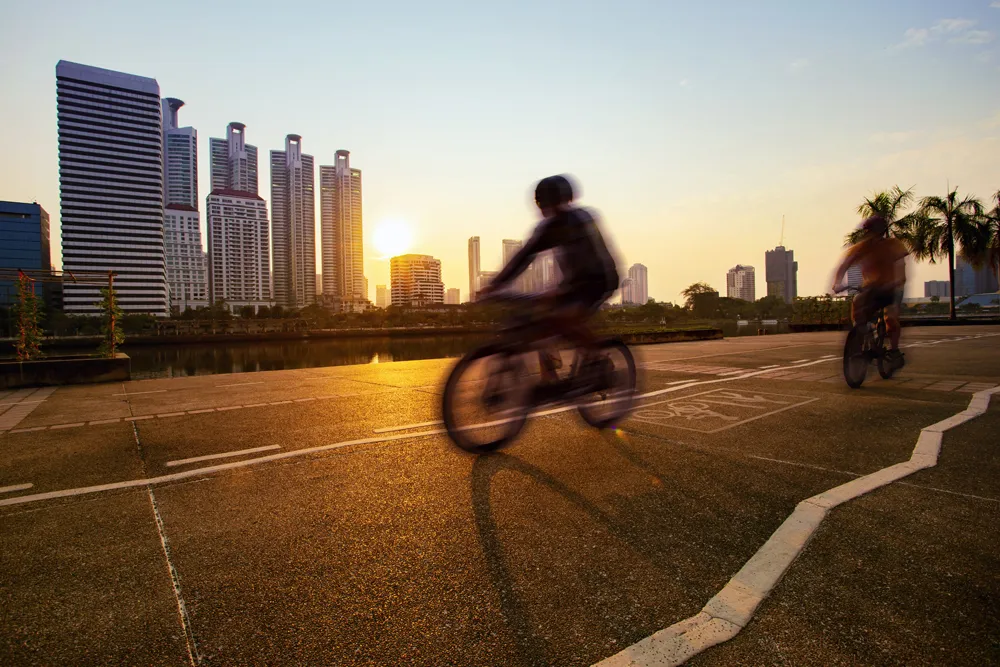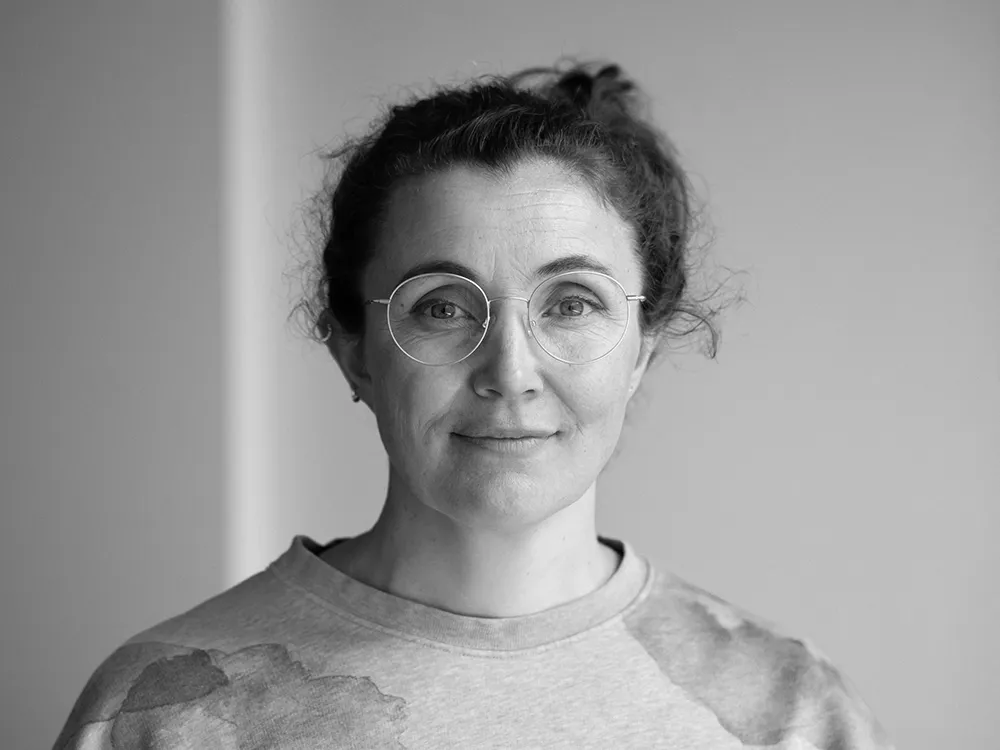
Sampo Hietanen, CEO of
He described the younger generation’s way of thinking as ‘here’s my timetable, who can provide the services?’ adding that with MaaS it was a case of “we will get you there. Don’t worry if it is a taxi, a bus or a rideshare… we will get you there.”
Turning to the audience he asked: “What would it take for you to give up your car?” arguing that in terms of the global economy and the environment, this was the world’s biggest question.
At around €300 per month, transport is many households’ second largest expenditure and 85% goes towards owning and running cars that are only used for 4% of the time. “Somebody will crack this,” he said but warned it required offering something more desirable than the car - something no single authority or company can do alone. “So it will take a bit of a jump and everybody has to jump together for it to work.”
While acknowledging existing transport operators may see MaaS as an additional level of business, he argued it was the only way to be in the market for that 85% of a household’s travel budget the car currently represents. “That means more markets for all service providers,” he said.
These sentiments were echoed by
Surender identified governments’ role in changing regulations to accommodate on-demand buses and MaaS, to require open data, in tendering for car and bike sharing, and in controlling and monetising the supply of parking. If done correctly these moves could see the value of mobility services more than double by 2025.
That is not to say MaaS providers and the existing transport operators have a clear run as Surender also highlighted how the car manufacturers are either directly or through partnerships becoming involved in a range of mobility services including integrated mobility.
In a session on technology and common standards for the MaaS market, Mika Rytkonen, director of head of business development at Here, told the conference that MaaS “needs one unified EU service platform and no borders. The whole idea will be useless if your service at home in France cannot be used in Spain.”
Mike Holdsworth, sector development director for transportation at Inmarsat agreed: “Yes, your [MaaS] systems need to be simple and they need to work.”
At Inmarsat, “we are about open standards, we give out our APIs, and we are about accurate positioning. We support disasters and we are often first there with the UN, the military, the media and I can tell you that your MaaS system needs to be on an open and reliable platform”
To get there, the market needs to work together, said Jacob Bangsgaard, chief executive of
All three speakers recognised the role that enabling legislation will play. The key “requirements for ‘mass MaaS’ deployment,” Bangsgaard said, are “support from public administrations and agencies; massive trust and take-up by users; open (…not necessarily free) access to transport system data; user roaming and payment clearing across MaaS schemes; and an account-based payment framework. This is what will lead to requirements for standards and consensus.”
To get to this consensus, the MaaS sector needs to think about things like privacy protection, data security and incentive schemes. There needs to be a minimum service level and a standardised level of availability for the service at all times. The industry needs to agree on roaming and an international cross-scheme payment clearing body … as well as account-based ticketing.
The MaaS Alliance, which now has more than 100 companies in membership, is working hard to find this common ground. Bangsgaard told the delegates that the alliance has set up four working groups: the first is looking into the single market to suggest fair competition and interoperability guidelines; the second is focusing on end-user needs and gaps as well as service, design, social inclusion and environmental sustainability; the third is a legal group trying to find the best way to remove regulatory barriers and set up incentives to support MaaS business models; and the fourth group is all about technical standards, data protection and security.
Good quality lateral thinking is vital. “It’s not about mobility or email or autonomous vehicles or electric vehicles or shared users, it is about of all these things … and more” said Rytkonen. “Location is the glue that will connect these disparate data sources and business models.”
Users will want a “frictionless” journey from A to B in a world that is “connected and intelligent” he added. We must create a “mobility environment” and get away from the current landscape where the “vast majority of data and [customer] experience is held in silos, [where] fragmented back-ends lead to an unsatisfactory consumer experience.”
For Bangsgaard, “users need to be able to get the information they need whenever and wherever they are. Data is so important. We need to use it to give people more choices and make their journeys more affordable and more personalised.”
MaaS will work best if it is a “game changer” the Ertico boss added. We have to get away from the traditional view of public transport, which is that “you start from a place that you didn’t want to start from, such as a bus stop, and end up in a place you don’t want to be, perhaps a railway station.” MaaS needs to think door-to-door, but in a shared and public way.
This theme was echoed by Andy Taylor, director of global strategy with Cubic – which provides the contactless fare system for TfL - who said “everybody is expecting an on-demand service.”
He said account-based systems, with suitable back-office processing, encourage people to use the services and adding more services increases availability in the urban area. “Every time we add an extra transit agency to the Clipper card [in San Francisco] we see an uptake in utilisation, and not just those who were with the joining agency. We are breaking down the barriers to people engaging in the public transportation network.
“We are getting a world where usage trumps possession - we don’t need a car, we need access to car, we want access to a mobility system.”
In a study aimed at quantifying the incremental trip benefit MaaS provides over traditional transportation, the company used a number of real-life trips in San Francisco and London. This showed that around 82% of the MaaS suggested routes were cheaper and/or faster than the current suggested routes using public transport. However, Taylor warned that travellers will quickly lose confidence in a system that does not provide accurate real-time information.
Andrew Pickford, director of Infrastructure and Transport Advisory Services at MVA in Hong Kong told delegates, “the future is already here – but it is not evenly distributed.
“While all the elements are in place, making MaaS sustainable (rather than a fad) required addressing the ‘pain points’ and for MaaS to work, it must be based on infrastructure and operations that retain the intended benefits over time.”
In common with other speakers he highlighted transport ‘silos’ as a barrier to encouraging modal interchange and his solution was to share the available information across all the modes in order to improve the traveller’s experience. He then examined MaaS enablers which he defines as an app, a payment gateway and a method of user interaction (retailer or the web), user requirements and defined business rules. Defined methods of data exchange between operators will need to be introduced (in which he felt the likes of Ertico could play a significant role) along with service level agreements – perhaps between public and private operators.
Perhaps more importantly he said there must be a willingness on the part of stakeholders to see the reallocation of benefits and profits. “Because as a new regime in a conservative environment there could be concern about ‘what are you doing, what are you offering us, why do you want to guarantee you can find demand for 100 of our seats and why do you want to resell our capacity’. There is a natural mistrust.”
This theme was picked up by
In this respect he, like others, said road pricing would help show drivers the real cost of end-to-end journeys. And while acknowledging MaaS operations being introduced in some cities, he warned this could leave people living in rural areas disadvantaged, asking “how will they participate? If they can’t participate, they will still be bringing their cars into towns and cities.”
He suggested autonomous vehicles could help reduce running costs of public transport as could the combining the movement of people and goods in one vehicle and said there will be a number of different financial models for MaaS and drivers for its implementation.
Gammons was followed on the podium by Mastercard’s Will Judge who examined how the payments sector can contribute to the successful deployment of MaaS. In many areas digital services on smart devices are increasingly replacing plastic as the means of making payment, “this is a fundamental change and one that aligns perfectly with what the MaaS community is trying to achieve,” he said.
While half of all Americans are aware of the facility to make mobile payments, currently only 18% use this facility, “but that’s going to change over the coming years,” said Judge. “You won’t need to build the payments side of MaaS yourselves… there will be lots of solutions from lots of providers and they will be interoperable and in the hands of those who want to use MaaS services,” he assured the audience.
He identified the company’s Masterpass payment system as effectively the digital equivalent of the current Mastercard. Masterpass ‘tokenises’ the user’s details and provides a digital token that is unique to the user’s device(s) – so instead of merchants having all the details on the user’s card, they only have a token that represents that card. “This will help MaaS providers as the systems [both as tokens and contactless] will be fully interoperable and can be used for ticketing.”
This is already evident in TfL’s contactless card system (provided by Mastercard) which has already accepted payments by users from more than 90 countries.
Such systems will allow payments to be made before travel, to pay for each leg at the appropriate moment or for utility-style payments where the MaaS provider pre-purchases capacity from transport operators. Judge said the latter left the MaaS provider with sorting out payments to various transport operators which he described as, “a huge matrix problem”. A problem that, he said, can be avoided by adopting the ‘pay-as-you-go’ model.










